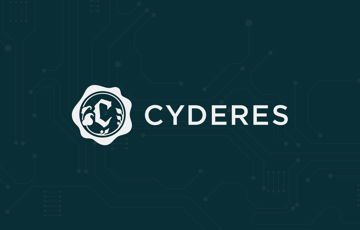In the ever-evolving landscape of cybersecurity, attackers are continually refining their methods to exploit vulnerabilities and gain unauthorized access. A recent incident we investigated highlights the importance of a truly multi-layered defense strategy.
Sophisticated adversaries can slip past initial security controls, making it essential to have comprehensive detection and response mechanisms that go beyond traditional perimeter and endpoint protections.
The Attack Summarized
The compromise began with the exploitation of a zero-day vulnerability in a widely used application. The attackers took advantage of a flaw in how the application processed data, enabling them to execute malicious commands remotely on a vendor-owned server and gain unauthorized access. Notably, this activity occurred without any intervention from the Endpoint Detection and Response (EDR) tool.
Once inside the environment, the attacker began enumerating the domain, leveraging legitimate system capabilities to gather information about the domain trusts and controller infrastructure. This activity triggered our threat-informed detection logic for Active Directory enumeration, allowing for an early identification of the intrusion. Shortly after, the attacker then attempted to transfer their tools onto the server utilizing a legitimate Windows utility. By abusing trusted system processes, they executed commands with malicious intent without introducing any new files into the environment, allowing them to briefly evade detection.
With initial access established, the attackers began mapping the internal environment to identify systems, accounts, and potential targets. This type of reconnaissance is a critical step in enabling lateral movement across the network and expanding their level of access. While these actions relied on built-in system functionality, they reflect a clear intent to escalate privileges and identify high-value assets for further exploitation.
The attackers then attempted to establish long-term access by tampering with a critical Windows system process used to run legitimate services. Their goal was to remain hidden and execute commands without raising suspicion. This attempt was successfully blocked through a combination of built-in system protections and endpoint security controls. By targeting such a core process, the attackers aimed to blend in with normal system behavior, making detection significantly more difficult.
Before the attacker could move further within the environment, our team quickly isolated the compromised system, effectively containing the threat. While the attacker had begun mapping domain infrastructure and attempted to establish persistence by targeting critical system components, those efforts were successfully blocked by endpoint security controls. Thanks to early detection and rapid response, the threat was contained before it could escalate or impact other parts of the environment.
The Role of Defense-in-Depth
This incident underscores the importance of a defense-in-depth approach to threat detection. While Endpoint Detection and Response (EDR) tools are essential for identifying and responding to threats, they are not foolproof—especially when attackers exploit unknown vulnerabilities and use legitimate tools to evade detection. In this case, initial attacker activity was identified by our detection logic, while the EDR system responded only at a later stage. This highlights the value of having multiple layers of detection working in concert to reduce dwell time and enable rapid mitigation.
A multi-layered defense strategy encompasses various security measures, including:
Application Security: Regularly updating and patching applications to mitigate known vulnerabilities and conducting thorough code reviews to identify potential deserialization flaws.
Network Segmentation: Dividing the network into segments to limit the spread of an attacker and implementing strict access controls between segments.
Threat-Informed Detections: Leveraging targeted detection logic designed to identify high-risk behaviors like Active Directory enumeration, suspicious process execution, and post-exploitation movement—providing early visibility into attacker activity before traditional tools raise an alert.
Threat Intelligence Integration: Incorporating up-to-date threat intelligence to recognize indicators of compromise and tactics used by adversaries.
Supply Chain Risk Management: Identifying and managing risks introduced by third-party vendors by understanding who is responsible for data throughout its lifecycle, clarifying system ownership, and regularly reviewing vendor security practices and compliance with industry standards.
User Education: Training employees to recognize phishing attempts and other common attack vectors to prevent initial compromise.
Implementing these layers creates a robust defense-in-depth framework that enhances your organization's ability to prevent, detect, and respond to attacks at various stages.
Conclusion
The sophistication of modern cyber threats necessitates a comprehensive and layered security approach. As demonstrated in this incident, attackers can exploit zero-day vulnerabilities and utilize legitimate tools to bypass initial security measures. By adopting a multi-faceted defense strategy, organizations can better protect their assets and respond effectively to emerging threats.
At Cyderes, we understand the complexities of the current threat landscape. Our expertise in managed detection and response, combined with proactive threat hunting and comprehensive security assessments, positions us to help organizations build resilient security postures. Partner with us to navigate the evolving cybersecurity challenges and safeguard your critical assets.
Contributors
Jonathan Waknin
Director, Threat Management
Ruben Huerta
Principal Security Analyst
Ready to strengthen your organization's security posture?
For more cybersecurity insights, follow Cyderes on LinkedIn and X.



